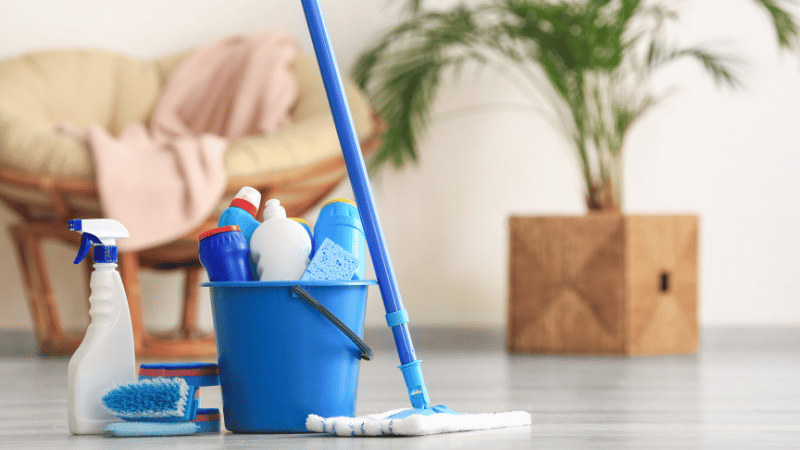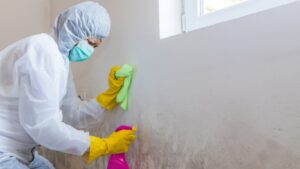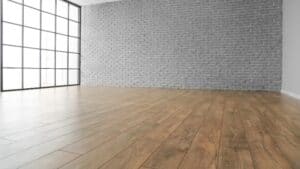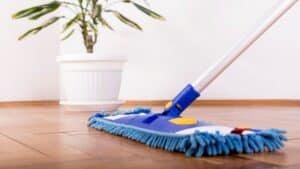Keeping your cleaning supplies properly stored isn’t just about tidying up – it’s about creating a safer and more efficient home. From preventing hazardous reactions caused by cleaning chemicals to maximizing storage space, thoughtful organization has benefits that go far beyond appearances. Imagine reaching for your glass cleaner or toilet cleaner without rummaging through a cluttered closet – sounds convenient, right?
In this guide, we’ll explore smart ways to organize cleaning supplies, from utilizing laundry room cabinets and wire shelving to optimizing vertical space with practical tools like S-hooks. Whether it’s bathroom cleaning supplies or larger cleaning tools like vacuum cleaners, we’ll share tips to keep your supplies easily accessible and safely stored. Let’s dive in and transform how you store and organize your cleaning essentials!
Why Proper Storage of Cleaning Supplies Matters?
Safety Concerns
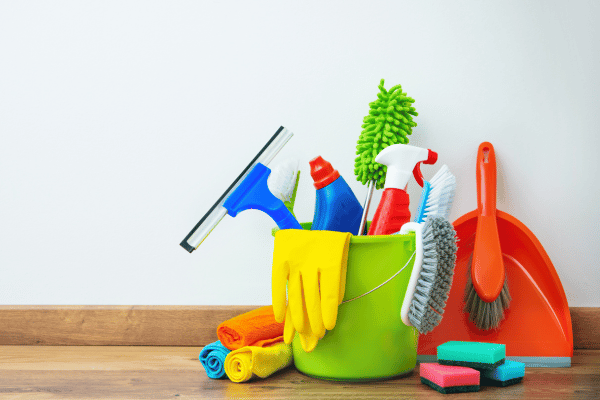
Improper storage of cleaning supplies can pose serious risks, especially in homes with children or furry friends as these are reactive and flammable chemicals Accidental ingestion of cleaning chemicals or exposure to toxic fumes can result in severe health hazards.
Additionally, certain combinations of cleaning products can cause hazardous reactions, releasing harmful gases. For example, mixing acids like chlorine or hydrogen peroxide with other chemicals can lead to highly corrosive outcomes, causing serious burns or damage.
Storing these items in a well-ventilated area and keeping them out of children’s reach is essential to prevent accidents and maintain a safe living environment.
Product Longevity
Did you know that cleaning products stored in areas prone to extreme temperature fluctuations can lose their effectiveness over time? Conditions like high humidity or exposure to direct sunlight can degrade cleaning solutions and flammable materials, making them less efficient or even unsafe.
To prolong the shelf life of products like glass cleaner, toilet cleaner, and kitchen cleaners, it’s vital to store them in dry spaces, away from hot pipes or HVAC intake vents.
Efficiency
An organized storage system saves more time than you think. When cleaning products are neatly arranged with clear labels or stored in small bins, it’s easier to quickly grab what you need. Imagine effortlessly finding your spray bottles or bathroom cleaners without rummaging through cluttered shelves.
Utilizing tools like lazy Susans or wire shelving in your laundry area or utility room can help streamline your cleaning routine and improve work operations, leaving you with more time to enjoy your clean home.
Proper storage isn’t just practical; it’s a necessary step in creating a safe, efficient, and well-maintained home.
How to Categorize Cleaning Supplies for Safe and Efficient Storage
Chemical Cleaning Products
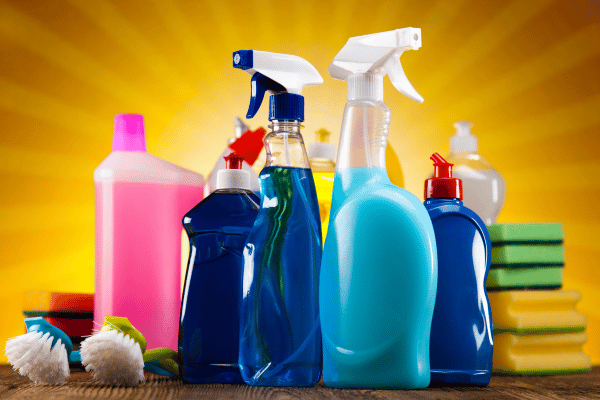
Chemical cleaners like bleach, window cleaners, disinfectants, and hydrogen peroxide are essential for deep cleaning but require careful handling. Storing reactive chemicals such as ammonia and bleach together can lead to dangerous reactions that release harmful fumes.
For instance, a spill involving both can create toxic chloramine gas, posing severe health risks. Always store these chemicals separately in their original, labeled containers to avoid confusion or misuse.
Choose a cool, dry, and well-ventilated area—preferably a safety cabinet—to keep these products away from heat and direct sunlight, which can degrade their effectiveness or cause hazardous reactions.
Tools and Equipment
Proper storage of cleaning tools like brooms, mops, dustpans, and vacuum cleaners not only keeps them organized but also prolongs their lifespan. Hang brooms and mops on wall-mounted hooks to prevent bristle damage and free up floor space.
Vacuum cleaners should be stored in a closet or utility room, with accessories neatly arranged in bins or bags for easy access. Always ensure tools like mops are thoroughly dry before storing them to avoid mold growth or unpleasant odors.
Protective Gear
Items like gloves, masks, aprons, and safety goggles are essential for personal protection during cleaning tasks. Keep these stored in a clean, dry drawer or box near the cleaning supplies they’re frequently used with. For hygiene, replace disposable items like gloves and masks regularly and check reusable gear for wear and tear.
Everyday Cleaning Essentials
Frequently used items like sponges, microfiber cloths, paper towels, and spray bottles of mild cleaners should be easily accessible for quick clean-ups. A portable caddy is an ideal solution, allowing you to carry these supplies from room to room effortlessly.
To prevent cross-contamination, always separate clean and dirty cloths, and replace sponges as needed to maintain cleanliness.
Organizing your cleaning supplies into these categories ensures safety, efficiency, and ease of use, making your cleaning routine smoother and stress-free.
9 Practical Ways to Store Cleaning Supplies at Home
1. Under the Sink Cabinet
The under-sink area is a practical spot for storing cleaning supplies because of its easy accessibility in most homes. To maximize this space, use pull-out organizers or stackable bins to keep items neatly arranged. For instance:
- Group frequently used items like dishwashing soap, sponges, and surface sprays in one caddy.
- Store less commonly used products, such as wood polish or oven cleaner, in a separate bin.
To make the most of this space, attach adhesive hooks to the inside of cabinet doors to hang gloves, scrub brushes, or small towels. For homes with children or pets, consider installing childproof locks on the cabinet doors or opting for a locking mechanism on the caddy itself to ensure safety.
This setup keeps your supplies organized, safe, and easily accessible without creating clutter.
2. Dedicated Cleaning Closet
A dedicated cleaning closet is an excellent way to keep your home clutter-free by providing a centralized space for all your cleaning tools and supplies. This ensures everything is in one place, making your cleaning routine more efficient.
To organize it effectively, install adjustable shelves to separate items by category:
- Use the top shelf for hazardous chemicals, keeping them safely out of children’s reach.
- Reserve the middle shelf for everyday cleaning products, ensuring quick access to frequently used items.
- Store heavy items like buckets or large containers of cleaner on the bottom shelf for stability.
Maximize vertical space by adding hooks or a pegboard to the inside of the closet door, perfect for hanging mops, brooms, or dusters. To maintain order, use labeled bins or baskets for specific supplies, such as “Bathroom Cleaning Supplies” or “Kitchen Essentials”.
With this setup, your cleaning closet becomes a functional and organized hub for all your cleaning needs.
3. Over-the-Door Organizers
Using over-the-door organizers is a smart way to maximize unused vertical space, especially in homes with limited storage options. These organizers are versatile and help keep smaller items within reach while staying neatly out of sight.
Opt for multi-pocket organizers with clear pockets to store lightweight items like sponges, microfiber cloths, and can also hang spray bottles. This allows you to see what you need at a glance, saving time and effort. However, avoid placing heavy or bulky items in the pockets, as they can strain the hooks or cause the organizer to become unbalanced.
These organizers work best on utility room or bathroom doors, offering quick access to frequently used cleaning supplies while maintaining a tidy appearance. It’s a simple yet effective solution for decluttering small spaces.
4. Wall-Mounted Racks
Wall-mounted racks are an efficient way to store bulky cleaning tools like brooms, mops, and dusters. By keeping them off the floor, you create a tidy, ventilated storage area that prevents damage and clutter.
Install tool grippers or hooks to securely hold the handles of mops, brooms, and dusters. For additional functionality, consider wall brackets to hang lightweight buckets or stackable cleaning caddies. This not only saves floor space but also keeps your tools easily accessible.
The best place for wall-mounted racks is in the garage or utility area, keeping heavy-duty cleaning tools out of living spaces while ensuring they’re neatly organized and ready to use. This solution combines practicality with a clean aesthetic.
5. Caddies or Bins
Using caddies or bins is a practical and portable solution for keeping cleaning supplies handy, especially when cleaning multiple rooms. These storage options ensure your tools are organized and always within reach.
For efficiency, create room-specific caddies to streamline your cleaning routine. For instance:
- A bathroom caddy can include essentials like toilet cleaner, scrub brush, glass cleaner, and microfiber cloths.
- A kitchen caddy might hold dish soap, degreaser, surface cleaner, and sponges.
For bulk supplies or larger items, stackable bins with transparent lids are ideal. They provide easy visibility, making it simple to locate what you need without rummaging.
Store your caddies in a central location, such as a utility room or under the sink, ensuring they are always accessible and ready to grab for quick cleaning tasks. This method keeps your supplies organized while saving time and effort.
6. Laundry Room Shelves
The laundry room often has untapped storage potential, making it an ideal spot for keeping cleaning supplies organized and within easy reach. By installing shelving units, you can create space for essentials like fabric softeners, cleaning sprays, and detergents. Choose between open or closed shelves based on your preference for visibility or a tidier appearance.
To maximize functionality, add broom holders to the walls for mops and brooms, keeping them off the floor and preserving their condition. Additionally, small bins can be used to organize smaller items such as sponges, brushes, and cleaning cloths, ensuring everything has a designated place.
This setup transforms your laundry room into a well-organized hub for cleaning tools and supplies, leveraging existing space efficiently.
7. Garage or Utility Room
The garage or utility room is perfect for storing large or heavy-duty cleaning supplies that aren’t used daily. This space allows you to keep bulky items organized and safely out of living areas.
Set up heavy-duty shelves to hold large containers of cleaning chemicals, buckets, and specialized equipment. These shelves provide a sturdy base for heavier items, reducing clutter on the floor. To further optimize the space, install wall hooks for hanging tools like power washers, hoses, or outdoor cleaning brushes, keeping them easily accessible.
For safety, store hazardous chemicals, such as pesticides or industrial cleaners, in a locked cabinet, ensuring they are secure and out of reach from children or pets. This setup ensures both efficiency and safety while leveraging the garage or utility room’s spaciousness.
8. Drawer Dividers for Small Items
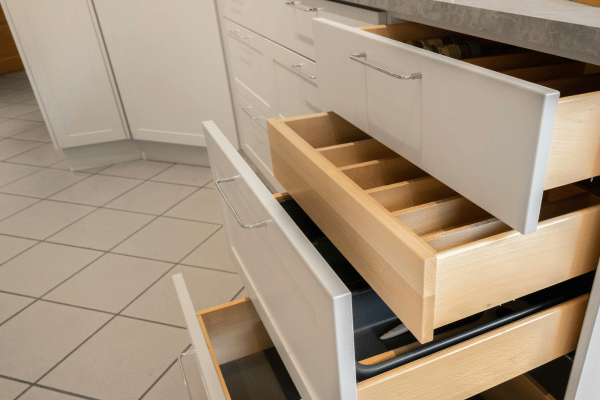
Using drawer dividers is a smart way to keep small, frequently used cleaning items neat and easily accessible. By adding compartmentalized dividers, you can separate essentials like sponges, scrub brushes, and cleaning gloves, ensuring they’re always organized and ready to grab.
This method works well for drawers in key locations like the kitchen, bathroom, or utility room, where quick access to cleaning tools is often needed. To enhance organization further, use labels or tags on each section, making it easier to identify and locate items at a glance.
Drawer dividers not only save time but also help maintain a clutter-free, organized storage solution for smaller cleaning essentials.
9. High Cabinets
High cabinets are an excellent storage solution for keeping hazardous chemicals like bleach and ammonia safely out of reach of children and pets. This ensures a secure environment while still providing easy access for adults.
Use the top shelf for storing strong or dangerous chemicals, keeping them well-separated from other household items. To prevent accidents, line the shelves with non-slip mats, which help stabilize bottles and prevent them from tipping over.
For safe access, keep a small step stool nearby, allowing you to retrieve items without straining or risking a fall. High cabinets combine safety and practicality, making them an ideal choice for storing potentially dangerous cleaning supplies.
Experience a Spotless Home with Modern Maids
At Modern Maids, we’re dedicated to transforming your home into a spotless, tidy, and welcoming space. Whether you need a one-time deep clean or regular maid services, our team in Dallas is committed to delivering exceptional results that make your home shine.
Booking a professional cleaning service has never been easier. Visit our booking page to schedule your cleaning in just a few clicks, or call us at (469)-430-8860 to speak with our team directly. Let Modern Maids handle the cleaning so you can focus on what matters most.
FAQs
Where should cleaning supplies be stored in a restaurant?
Cleaning supplies in a restaurant should be stored in a designated area separate from food storage or preparation zones to prevent contamination. Use well-ventilated spaces like utility rooms or cabinets for chemicals and ensure they are clearly labeled. Avoid placing cleaning products near hot pipes or HVAC intake vents. Store tools like mops and brooms off the floor using hooks or racks to maintain hygiene.
Where should cleaning products and chemicals be stored in your workplace?
In workplaces, cleaning products and chemicals should be stored in dedicated storage cabinets or utility rooms, clearly labeled and organized.
Place hazardous chemicals in locked cabinets or areas with restricted access to ensure employee safety. Follow guidelines for ventilation and avoid placing chemicals near hot pipes or HVAC intake vents to prevent accidents.
What are the OSHA guidelines for chemical storage?
OSHA requires that chemicals be stored in properly labeled containers in well-ventilated areas. Employers must maintain Safety Data Sheets (SDS) for all chemicals and ensure they are accessible.
Hazardous chemicals should be stored based on their hazard class, avoiding mixing incompatible substances to prevent hazardous reactions. Additionally, employees must receive training on safe handling and storage practices.
Where should cleaning cloths be stored when not in use?
Cleaning cloths should be stored in a dry, well-ventilated area to prevent mold and unpleasant odors. Keep them separated into clean and dirty bins to avoid cross-contamination.
For easy access, use clear bins or designated shelves in a utility room or laundry area, and ensure they are washed and dried thoroughly after each use.

